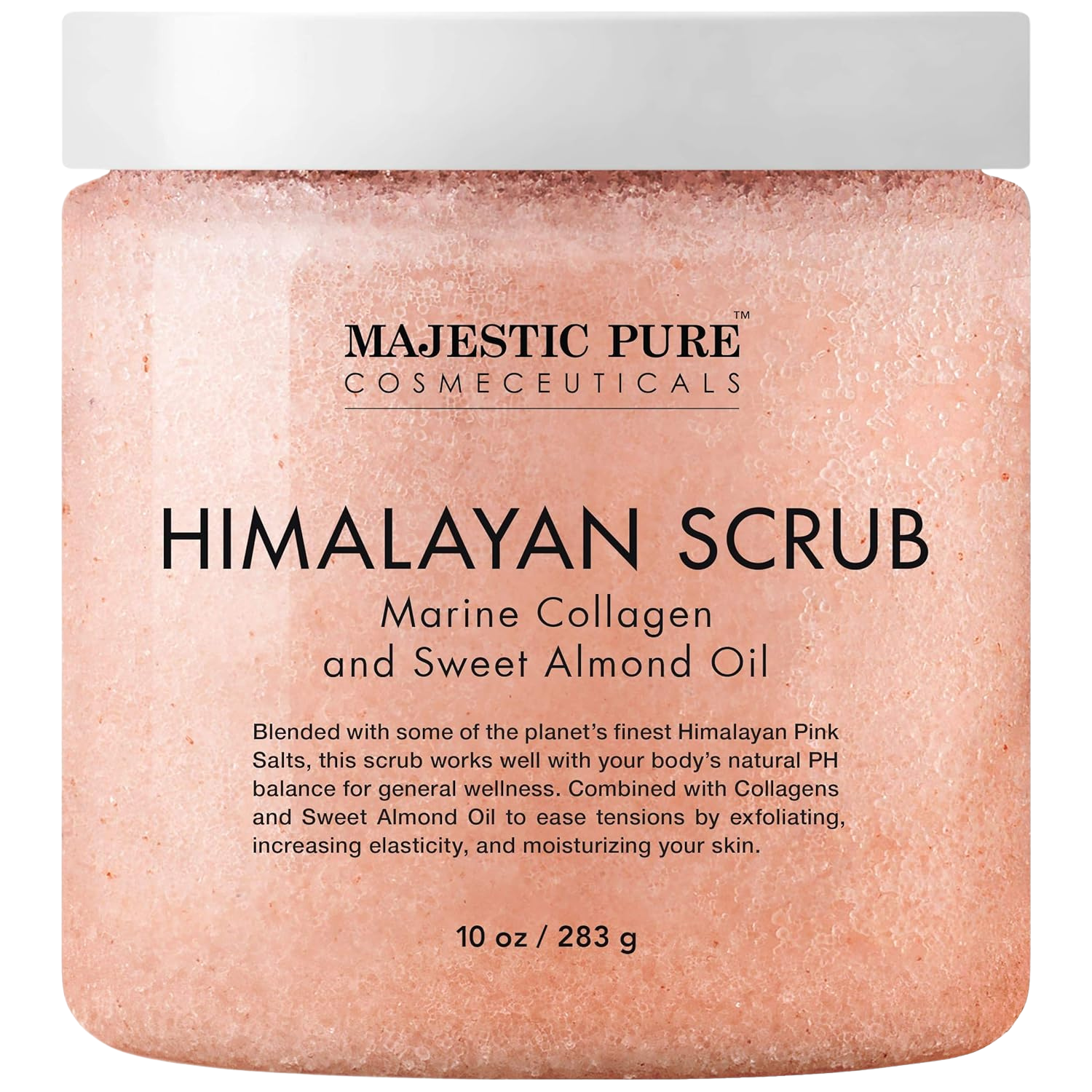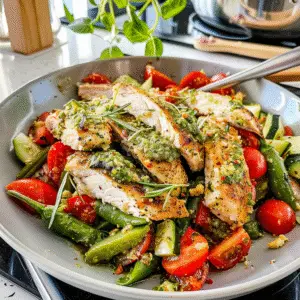– Multiple Focus Keyphrase Synonyms: Pad Kee Mao, Thai Stir-Fried Noodles, Spicy Drunken Noodles
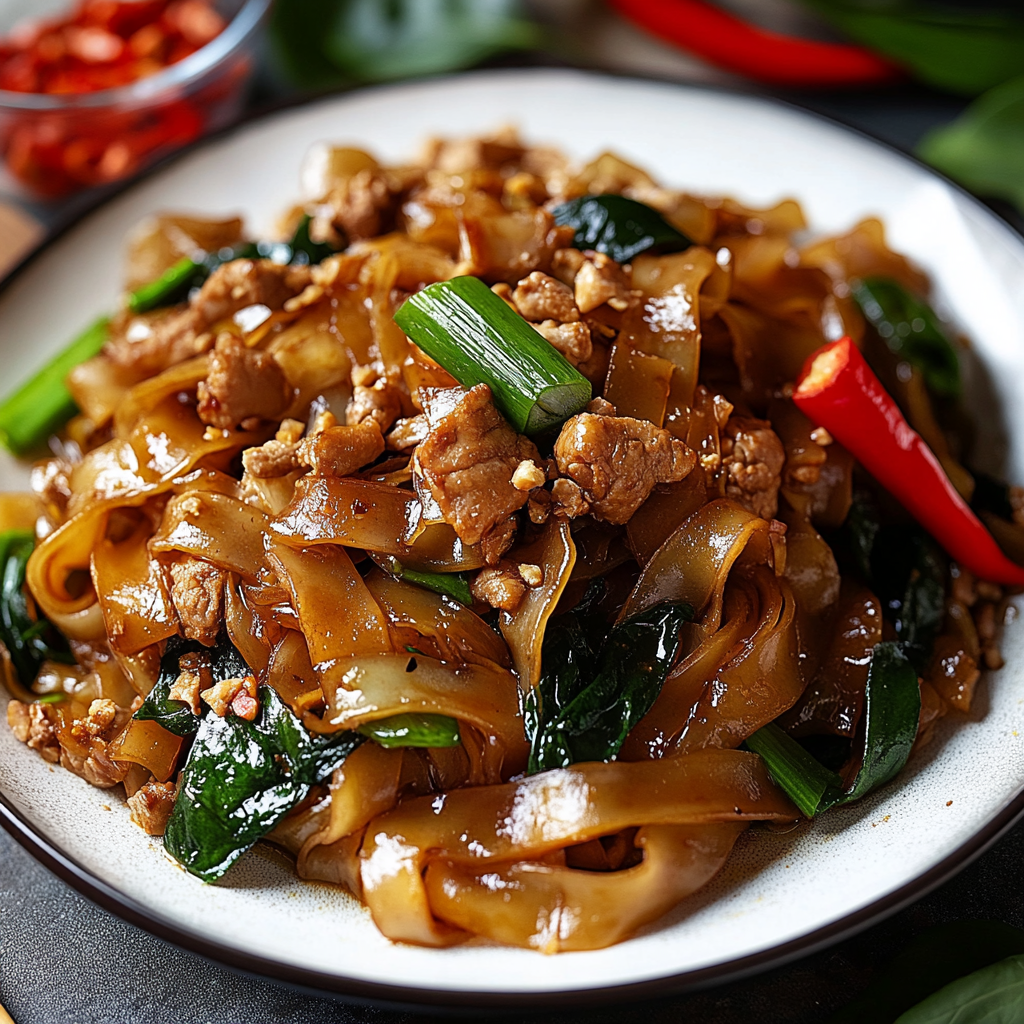
– Multiple Tags: Thai food, noodle recipes, stir-fry recipes, quick meals, authentic Thai cuisine
Introduction and Quick Summary
Thai Drunken Noodles, known as Pad Kee Mao in Thailand, is a dish bursting with flavor and character. This beloved street food is famous for its spicy kick and fragrant noodles that tantalize the taste buds. The origin of the name reflects the dish’s reputation for being a perfect late-night meal or a remedy for an evening of indulgence. The combination of wide rice noodles, fresh vegetables, and a savory sauce creates a dish that is not only satisfying but also versatile. You can add your choice of protein—chicken, shrimp, or tofu—making it suitable for everyone.
In this article, we will guide you through the process of making authentic Thai Drunken Noodles at home. You will find detailed instructions that break down each step to ensure success. Whether you’re hosting friends or enjoying a quiet night in, this recipe will impress. Get ready to transform your kitchen into a vibrant Thai eatery filled with enticing aromas and flavors.
So grab your wok and let’s dive into the world of Thai cooking! You’ll love how easy it is to whip up this delectable dish right in your own home.
Main Ingredients
Rice Noodles
Rice noodles are the backbone of Pad Kee Mao. They are flat and wide, which allows them to soak up the flavors of the sauce beautifully. For this recipe, use about 8 ounces (225 grams) of dried rice noodles. Soak them in warm water for about 30 minutes or until they become pliable but not fully cooked. Drain and set aside; they will finish cooking in the stir-fry.
Fresh Vegetables
A colorful assortment of vegetables adds both nutrition and texture to your dish. Use bell peppers (1 cup sliced), carrots (1 cup julienned), and green beans (1 cup trimmed). These vegetables not only provide crunch but also enhance the visual appeal of your plate. You can customize the vegetables based on what you have on hand or prefer.
Protein Choice
For added heartiness, include your choice of protein such as chicken breast (8 ounces sliced), shrimp (8 ounces peeled), or firm tofu (8 ounces cubed). Each option offers unique flavors that complement the noodles well. If using meat or shrimp, ensure they’re cooked through before adding other ingredients to the wok.
Soy Sauce
Soy sauce serves as one of the main flavor components in Pad Kee Mao. Use about 3 tablespoons of light soy sauce for seasoning the dish. It adds saltiness and depth to the overall taste profile while balancing out the spice from other ingredients.
Oyster Sauce
This thick condiment adds a rich umami flavor that is essential for an authentic taste experience. Incorporate 2 tablespoons of oyster sauce into your mix; it pairs wonderfully with soy sauce to create a luscious coating for your noodles.
Chili Sauce
To achieve that signature heat associated with drunken noodles, use chili garlic sauce (about 2 tablespoons). Adjust according to your spice preference; remember that you can always add more but cannot take it away!
Fresh Basil
Thai basil is an aromatic herb that brings freshness to this dish. Use about 1 cup packed leaves just before serving; its distinct flavor sets Pad Kee Mao apart from other noodle dishes.
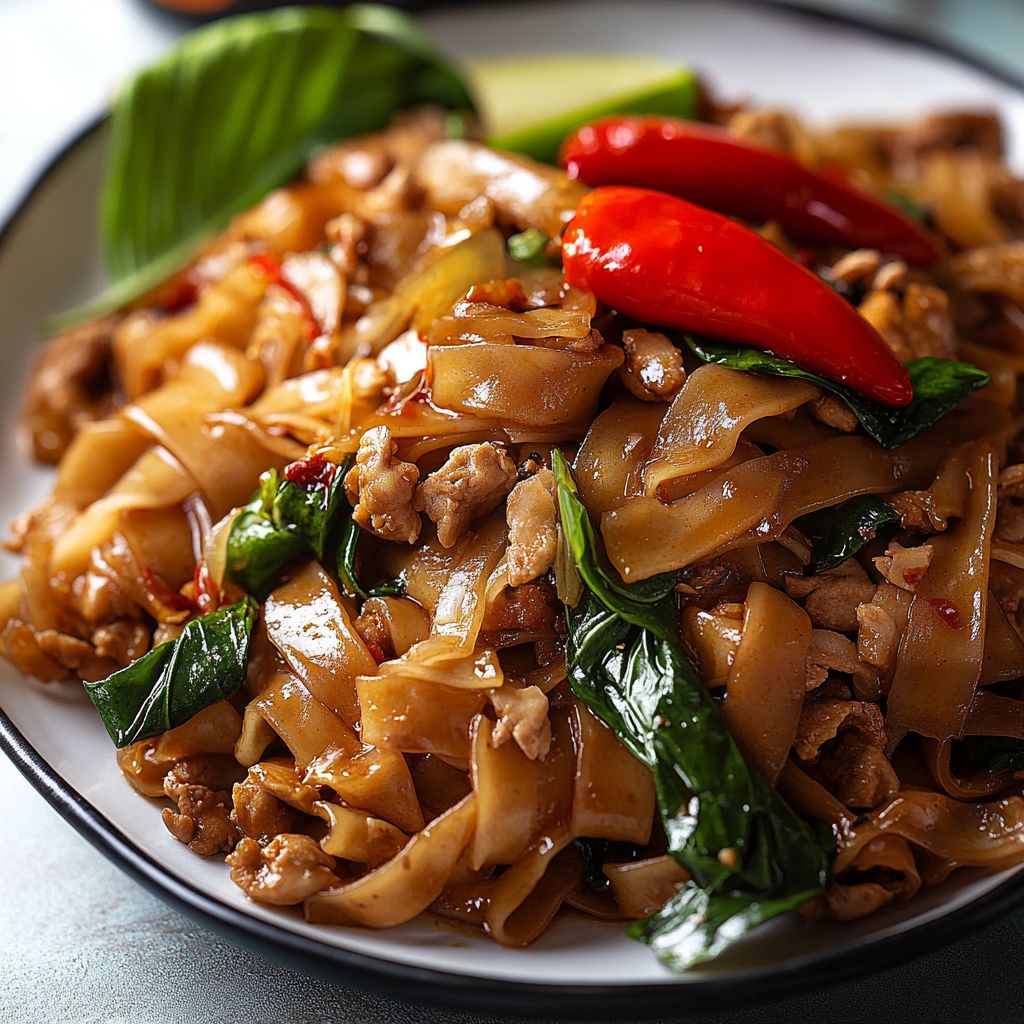
How to Prepare Thai Drunken Noodles (Pad Kee Mao)
Step One: Preparing the Ingredients
Start by prepping all ingredients before cooking; this will make your cooking process smooth and efficient. Soak rice noodles in warm water until soft but al dente then drain them thoroughly to remove excess moisture. Slice vegetables into uniform pieces for even cooking—this includes julienning carrots and slicing bell peppers into strips. If you’re using protein such as chicken or shrimp, slice them thinly so they cook quickly in hot oil later on.
Combine soy sauce, oyster sauce, chili garlic sauce in a small bowl; whisk everything together well—it creates a flavorful stir-fry sauce that brings life to your noodles! Lastly, wash basil leaves under cold water and pat dry gently using paper towels; set these aside as you’ll add them toward the end for a burst of aroma.
Step Two: Cooking Your Protein
Heat 2 tablespoons of vegetable oil in a large wok over medium-high heat until shimmering but not smoking—this ensures everything cooks evenly without sticking! Add sliced protein (chicken/shrimp/tofu) first; stir-fry until cooked through—roughly 5-7 minutes depending on thickness.
If using tofu ensure it’s crispy by letting it brown slightly before moving onto next steps! Once proteins are done transfer them onto a plate temporarily while keeping heat on high! This step enhances flavors significantly plus allows us room for our veggies!
Step Three: Stir-Frying Vegetables
In the same hot wok add another tablespoon of vegetable oil if necessary then toss in prepared vegetables immediately after protein removal! Stir-fry them vigorously for approximately two minutes until brightened yet still crisp—this maintains their nutritional value along with crunch factor!
Once veggies start softening return cooked protein back into wok along with soaked rice noodles previously drained! Pour over pre-prepared stir-fry sauce ensuring everything gets coated evenly—using tongs gently mix everything while keeping it moving within pan!
Step Four: Final Touches
Continue stirring continuously until all components are heated through; typically around three minutes total time desired texture reached! At last moment sprinkle fresh basil leaves over top allowing aromatic oils release enhancing fragrance throughout entire mixture! Give one final toss ensuring all elements meld harmoniously creating delightful dish known as drunken noodle glory!
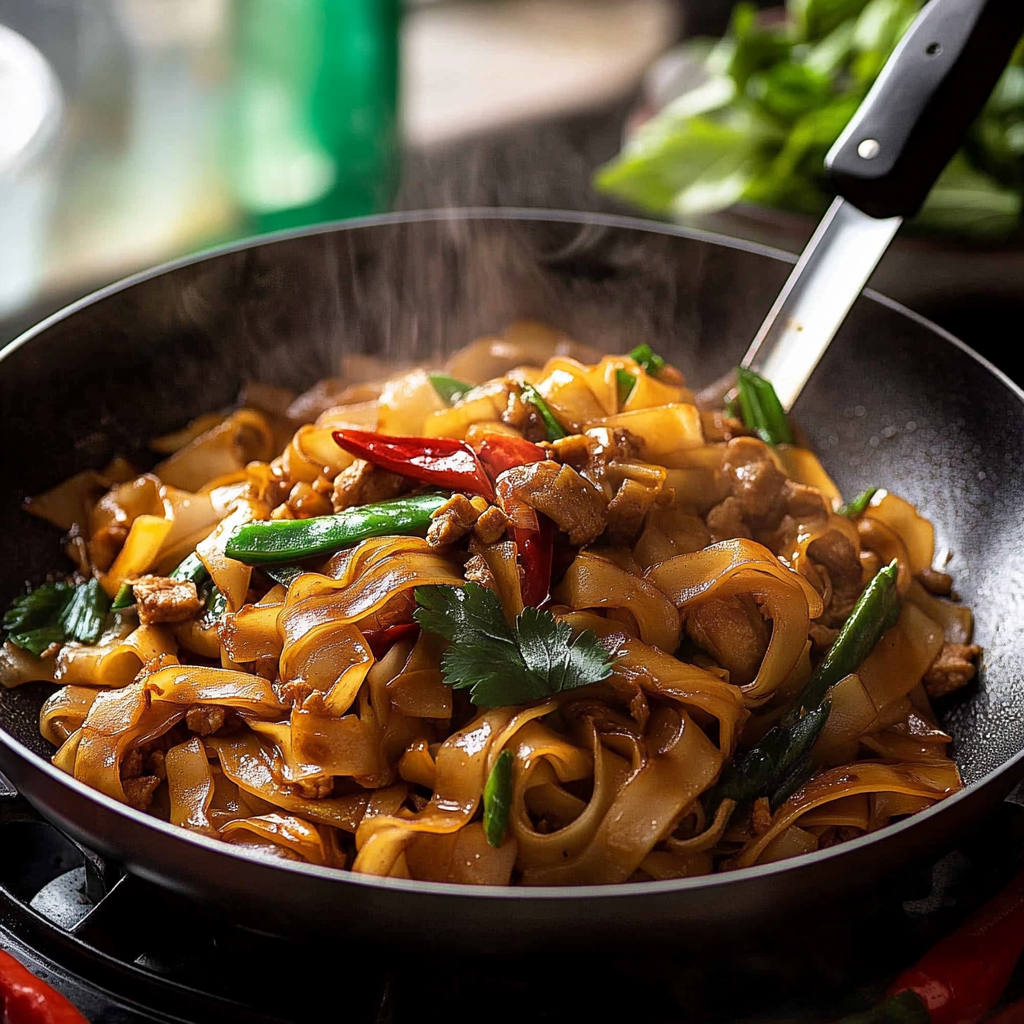
Serving and Storing Tips
Serving Suggestions
When serving Thai Drunken Noodles consider plating them immediately after cooking while still hot; this preserves optimal flavor profile ensuring guest enjoyment remains high! Garnish each bowl generously with extra basil leaves alongside lime wedges which impart zesty brightness enhancing overall experience even further! For those who enjoy heat additional chili flakes may be sprinkled on top as well catering preferences accordingly!
Pair these delightful noodles alongside refreshing beverages such as iced tea or coconut water offering balance amidst spice levels present within meal itself making it enjoyable every bite taken! Sharing amongst friends elevates atmosphere naturally creating unforgettable gatherings filled laughter accompanied delicious culinary creations shared together!
Storage Guidelines
Leftover Pad Kee Mao can be stored tightly covered within refrigerator up three days maximum retaining freshness without compromising quality! To reheat simply place desired portion onto stovetop skillet over low-medium heat stirring occasionally until warmed thoroughly again maintaining moisture throughout pasta strands preventing dryness occurring during reheating phase which often happens otherwise if neglected longer periods stored away from heat source prior consuming again!
If planning ahead prepare separate containers storing individual components separately avoiding sogginess developing upon longer storage duration—this prolongs life span preserves delightful flavors initially crafted ensuring every bite remains just as enjoyable first served day prepared initially too!
By following these steps outlined above you’ll masterfully create authentic tasting Thai Drunken Noodles within comfort home achieving satisfaction guaranteed every time enjoyed whether solo dining moments shared loved ones alike indulging culinary delights offered across cultures celebrated worldwide today truly bringing joy table whenever served!
Mistakes to Avoid
One common mistake when preparing Thai Drunken Noodles (Pad Kee Mao) is using the wrong type of noodles. For this dish, flat rice noodles are essential. Using thin rice vermicelli or other pasta types will not yield the authentic texture and taste that defines Pad Kee Mao. Always look for wide rice noodles, typically labeled as “sen yai” in Asian markets.
Another frequent error is neglecting the importance of high heat during cooking. Thai Drunken Noodles require a hot wok or pan to achieve that signature smoky flavor known as “wok hei.” If the heat is too low, the ingredients will steam rather than fry, resulting in a soggy dish instead of a stir-fry. Preheat your pan thoroughly before adding oil and noodles.
Additionally, many home cooks underestimate the role of fresh ingredients. Stale vegetables or older herbs can diminish flavor significantly. Always opt for fresh basil, crisp vegetables, and high-quality proteins. This approach ensures that every bite bursts with flavor and authenticity.
Lastly, avoid skimping on seasoning. The balance of soy sauce, oyster sauce, and chili paste is crucial to achieving the desired taste profile in Thai Drunken Noodles. Taste as you go and adjust seasonings accordingly; remember that each ingredient contributes to the final flavor.
Tips and Tricks
To master Thai Drunken Noodles (Pad Kee Mao), start by prepping all your ingredients before cooking. This dish comes together quickly once you begin stir-frying, so having everything chopped and measured will make the process smoother and more efficient.
One effective technique is to marinate your protein beforehand. Whether you’re using chicken, shrimp, or tofu, marinating it in soy sauce and a bit of cornstarch adds depth of flavor while keeping it tender during cooking.
When it comes to herbs, don’t hold back on Thai basil! It’s one of the key components that elevate your Pad Kee Mao. Use both sweet basil and holy basil if possible for a layered flavor profile. Add the basil towards the end of cooking to preserve its aromatic qualities.
Using a combination of sauces can also enhance the dish’s complexity. While soy sauce provides saltiness, oyster sauce adds sweetness and richness. A hint of fish sauce can provide umami depth without dominating other flavors.
Finally, serve your Thai Drunken Noodles immediately after cooking for optimal taste and texture. Allowing them to sit can lead to clumping or sogginess as they absorb moisture from the sauces. Pair your dish with lime wedges on the side for an extra zesty kick!
Suggestions for Thai Drunken Noodles (Pad Kee Mao)
For an authentic experience with Thai Drunken Noodles (Pad Kee Mao), consider including various vegetables such as bell peppers, carrots, and snap peas for added color and crunch. These veggies not only enhance nutrition but also provide contrasting textures that make each bite enjoyable.
Experimenting with proteins can also elevate your dish. While chicken and shrimp are popular options, alternatives like beef or even plant-based proteins can cater to different dietary preferences without sacrificing flavor. Each protein brings its unique taste that complements the overall dish.
Don’t forget about customizing spice levels! If you enjoy heat, include more chili paste or fresh chilies during cooking. Alternatively, if you prefer milder flavors, reduce these spicy ingredients but consider serving them on the side so guests can add their desired heat.
Also consider pairing your Pad Kee Mao with refreshing sides like cucumber salad or spring rolls to balance out the meal’s richness. These sides offer a light contrast that enhances your dining experience while providing additional textures.
Lastly, always try to use homemade sauce whenever possible for an authentic touch! Making your own sauces allows you to control ingredients better than store-bought versions while ensuring maximum freshness in flavor.
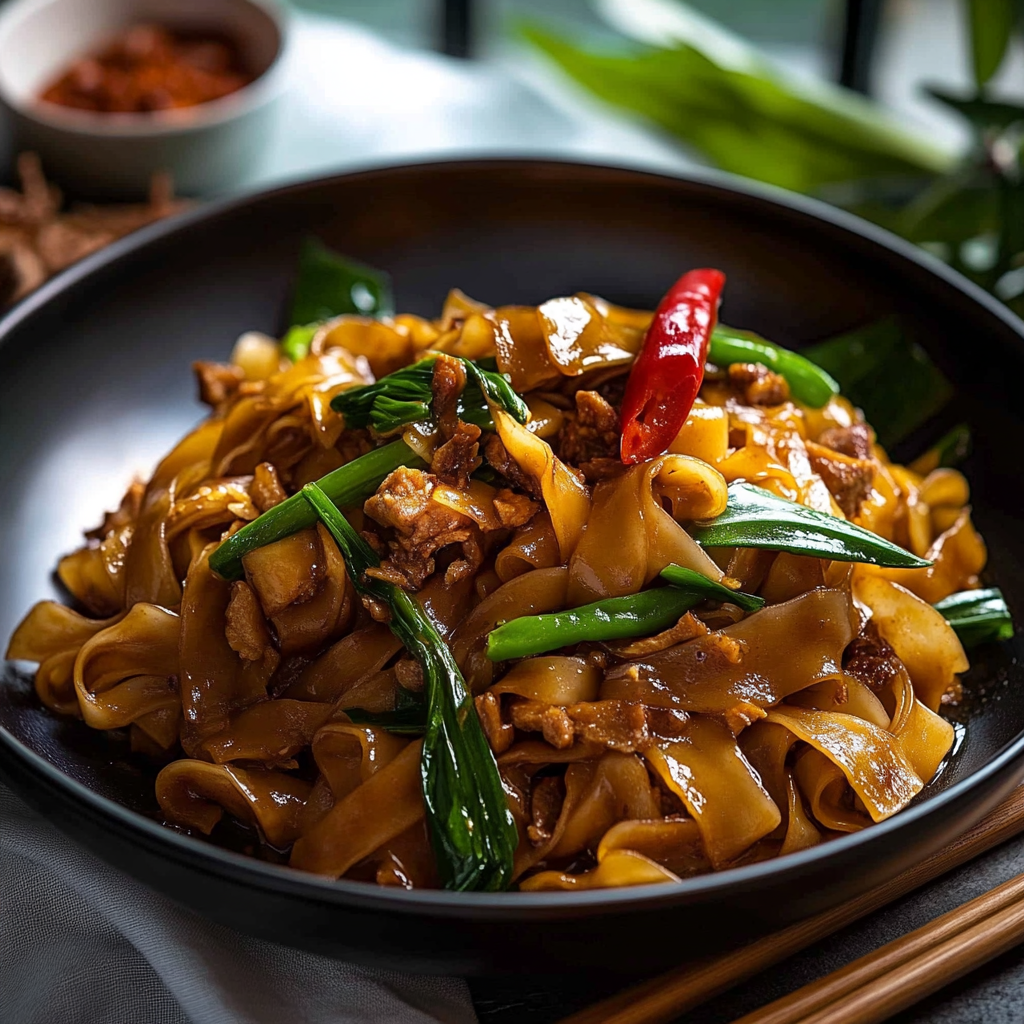
FAQs
What are Thai Drunken Noodles?
Thai Drunken Noodles (Pad Kee Mao) is a popular stir-fried noodle dish hailing from Thailand known for its bold flavors and aromatic herbs. The main ingredients include wide rice noodles sautéed with fresh vegetables like bell peppers and carrots along with a choice of protein such as chicken or shrimp. Sauces like soy sauce and oyster sauce bring depth to this savory dish while fresh basil adds a fragrant note that ties everything together beautifully.
How do I make my own Pad Kee Mao sauce?
To create your own Pad Kee Mao sauce at home, combine equal parts soy sauce and oyster sauce with a splash of fish sauce for umami depth. Add sugar or honey for sweetness according to preference—this balance is crucial! You may also incorporate chili paste based on desired spice levels; adjust ingredients until achieving your preferred flavor profile before adding it directly into cooked noodles during preparation.
Can I use other types of noodles?
While traditional Pad Kee Mao calls for wide rice noodles known as sen yai, experimenting with other noodle types is possible but might alter authenticity slightly! For instance: flat egg noodles or even whole wheat varieties could work in a pinch; however keep in mind they will change texture significantly when compared against classic wide rice options which are essential for achieving true flavor profiles enjoyed across Thailand!
Is Pad Kee Mao spicy?
The spiciness level in Pad Kee Mao largely depends upon how much chili paste or fresh chilies are used during cooking! Traditional recipes often feature moderate heat due primarily from these elements; however feel free adjusting heat levels according individual preferences by adding more or less spice according taste!
What are good toppings for Thai Drunken Noodles?
Common toppings include freshly chopped cilantro leaves or green onions sprinkled atop each serving just before enjoying! Another delightful option involves crushed peanuts which add crunchy texture alongside vibrant flavors complementing overall plate presentation beautifully creating an appetizing look!
How do I store leftovers?
To store leftover Thai Drunken Noodles (Pad Kee Mao), place them in an airtight container once cooled completely after serving time—this prevents excess moisture buildup which could lead sogginess over time! Refrigerate within two hours consumption window ensuring freshness lasts longer; consume within three days rewarming thoroughly microwave safe containers prior enjoying again!
Conclusion
In summary, mastering Thai Drunken Noodles (Pad Kee Mao) requires attention to detail in both preparation and cooking techniques. Avoiding common mistakes such as using incorrect noodles or neglecting high heat ensures an authentic experience every time you make this beloved dish at home.
Implementing helpful tips like prepping ingredients ahead of time allows seamless transitions between steps while marinating proteins enhances flavors tremendously! Don’t hesitate exploring various vegetable combinations alongside customizable spice levels—these elements bring personal flair making each batch uniquely yours!
Consider pairing this delicious noodle creation with refreshing sides elevating meal experiences overall satisfying cravings perfectly balancing richness found within every bite served hot straight from stove top ensuring freshness enjoyed fully! With these guidelines at hand enjoy crafting perfect plates filled delightful aromas inviting family friends savor moments together around table sharing delicious culinary traditions passed down generations through flavorful dishes like classic Pad Kee Mao!

